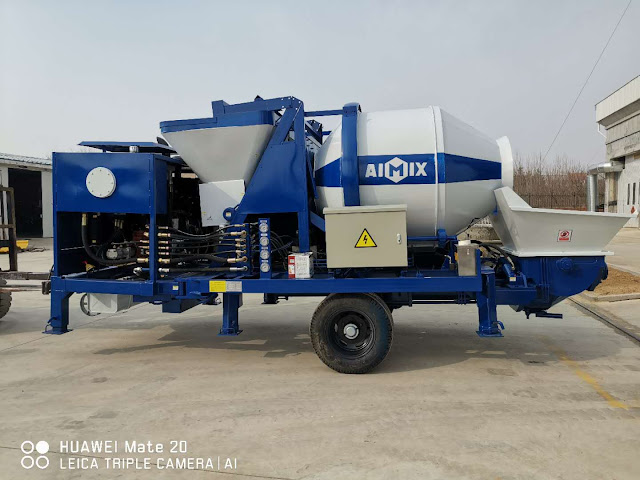Concrete Plants: How to Create an Effective Budget
Setting up a concrete plant is a complex venture, but a well-prepared budget can help make the process more manageable and minimize financial risks. By identifying potential challenges, allocating resources effectively, and setting clear financial goals, a budget becomes an essential tool for the success of your business. Here are the steps involved in creating a comprehensive budget for establishing a concrete plant.
1. Conduct Market Research
Analyzing Demand and Competition
The first step in budget preparation is conducting thorough market research. Start by assessing the demand for concrete in your target region. This can involve studying current construction projects, local development plans, and population growth trends, as well as identifying major customers like construction companies and public infrastructure developers.
Evaluating Competitors and Market Trends
Understanding the level of competition is equally important. Analyzing local competitors’ pricing, services, and quality can help you position your concrete plant(cuanto vale una planta de concreto) effectively. Additionally, tracking market trends, such as shifts towards eco-friendly concrete solutions, will provide insights into potential growth areas and associated costs.
2. Estimate Equipment and Infrastructure Costs
Identifying Essential Equipment
Establishing a concrete plant requires various specialized equipment. Essential items include:
- Batching Plants: These are crucial for preparing the right concrete mix and will be one of your main investments.
- Concrete Mixers and Conveyors: Necessary for efficient mixing and transport of concrete, which influences operational efficiency.
- Other Machinery: Supporting equipment like cement silos, water tanks, and aggregate storage is also required.
Infrastructure and Utility Setup
Besides machinery, you’ll need to plan for infrastructure such as buildings, storage areas, and office spaces. Also, factor in the cost of setting up utilities like electrical connections, water supply, sewage systems, and waste management. These utilities are critical, as they directly impact your plant’s productivity.
3. Calculate Labor and Operating Costs
Workforce and Payroll Expenses
Running a concrete plant(planta de concreto estacionaria) requires skilled labor, including operators, technicians, quality control personnel, and administrative staff. Estimate the number of employees needed and budget for their wages, benefits, and any required training. Additionally, account for annual wage adjustments and potential overtime pay, especially if production demands increase.
Recurring Operational Expenses
Operating costs also include maintenance, utilities, insurance, and safety compliance. Maintenance, in particular, can be substantial, as concrete plants involve heavy-duty machinery that requires regular servicing. Additionally, allocate funds for necessary permits and licenses as these are required by authorities and ensure your operations are compliant.
4. Plan for Sales and Marketing
Building a Sales Strategy
Marketing is essential to reach potential customers and secure contracts for steady revenue. Your marketing budget should cover online advertising, printed materials, and networking events. It’s also beneficial to consider partnerships with construction companies and local contractors, which can provide steady demand for your concrete.
Setting Sales and Revenue Projections
Estimating sales revenue is crucial for determining if your plant will be profitable. By analyzing local demand and potential production capacity, you can project monthly and yearly revenues. These projections will help set realistic targets and may guide decisions around production capacity and pricing strategy.
5. Prepare for Contingencies and Expansion
Allocating Funds for Unexpected Costs
Unexpected expenses and challenges are inevitable in large-scale projects. Setting aside contingency funds ensures that you are prepared for emergencies like machinery breakdowns, price fluctuations in raw materials, or unexpected repairs.
Planning for Future Expansion
Including expansion in your budget can be a strategic move. As construction demands grow, your concrete plant may need additional capacity or upgraded technology to stay competitive. Budgeting for potential upgrades or additional equipment can prepare your plant for future industry demands and help you retain a competitive edge.
6. Reviewing and Updating Your Budget Regularly
Tracking Progress and Adjusting for Changes
Once your plant is operational, regularly reviewing and updating your budget is essential to stay on track. Monitoring costs, sales performance, and production efficiency can reveal areas where adjustments are necessary. By doing so, you ensure that your financial strategy remains effective in meeting changing market conditions or unexpected expenses.
Conclusion
Establishing a concrete plant requires a well-thought-out budget that addresses equipment, labor, marketing, and contingency costs. By conducting thorough market research, calculating expenses for essential infrastructure, and planning for future growth, you can create a budget that minimizes risks and enhances financial stability. Remember, a proactive approach to budgeting not only helps in allocating resources efficiently but also positions your concrete plant for long-term success in the competitive construction industry.




Comments
Post a Comment